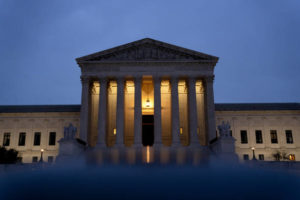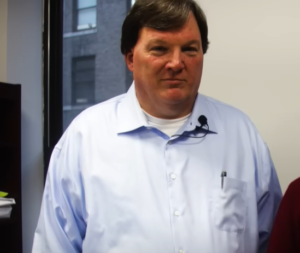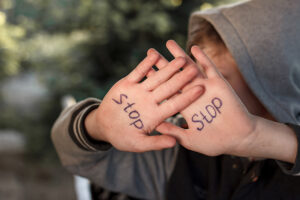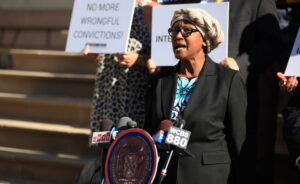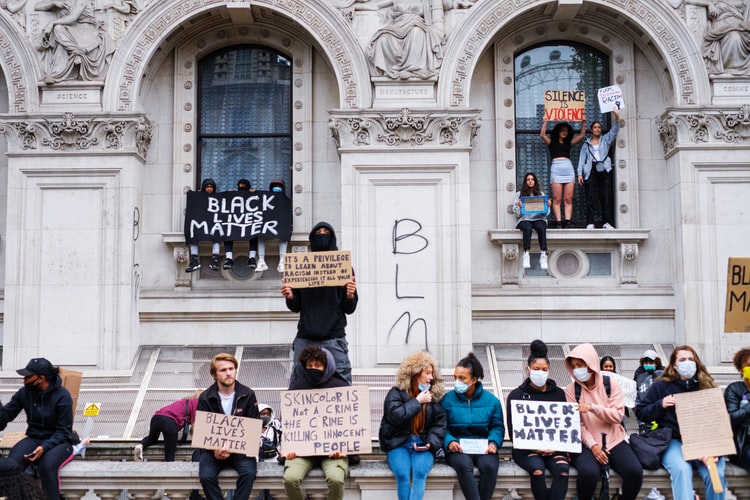
Image Credit: Ehimetalor Akhere Unuabona/Unsplash
Kenosha, Wisconsin, and Minneapolis – Two African-American men were attacked by police in the Midwest this year — Jacob Blake, 29, was shot seven times in the back by police and he remains paralyzed, while George Floyd, 46, died as a police officer knelt on his neck for over eight minutes.
Viral videos of these two incidents demonstrate that neither man resisted police arrest, nor did they try to fight back against police. The Department of Justice has launched two civil rights investigations; one for each case, at the request of political officials in Kenosha and Minneapolis.
Though both men experienced physical and mental trauma at the hands of police, the trials are occurring for very different reasons. Blake, a Kenosha resident, faces third-degree sexual assault, disorderly conduct, and criminal trespass charges. A warrant was issued for Blake’s arrest, before his being shot on August 23.
There were no charges or arrest warrant issued against Floyd. Four police officers have been accused in Floyd’s death: Derek Chauvin, 44; J. Alexander Keung, 26; Thomas Lane, 37; and Tou Thou, 34.
One man is paralyzed and scheduled to face the court in a hearing via Zoom, while the other man died and will never know the outcome of his trial. Both men were assaulted by the police. Both cases have sparked protests on a national scale, as the public continues to call for justice. The differences between the two cases are detailed below.
The Case of Jacob Blake
Jacob Blake was born and raised in Evanston, Illinois. His grandfather, with the same name, was a minister at an A.M.E. church in Evanston. Blake’s grandfather was also a civil rights leader.
Blake moved to Kenosha several years ago to find work and raise his family. Three of Blake’s six children were born of a relationship between him and his ex-girlfriend. She filed the charges against Blake on July 6.
Blake’s ex told police that on May 3 he broke into her house and sexually assaulted her. Blake also stole her truck and debit card. Blake had no prior convictions or criminal record in any state. The ex-girlfriend was not identified by name in the complaints she issued against Mr. Blake. A warrant was issued for Blake’s arrest on July 7, according to official case records.
On August 23, Blake’s ex-girlfriend called police to notify them of his presence at her home, according to official interviews and records. Police officers responded to what they describe as a domestic complaint.
After arriving at the scene, state officials said the police tried to use a stun gun on Blake. Police said they also found a knife in the passenger seat of Mr. Blake’s car. As Blake attempted to enter the driver’s side of his car, he was shot seven times in the back by the police. Authorities are still sorting out why Blake moved away from police to go to his car since his actions resulted in officers opening fire.
On August 26, the Justice Department announced it would investigate the shooting. The Wisconsin Department of Criminal Investigation is also looking into the case. Rusten Shesky, the police officer who shot Blake, and the two other officers who were also at the scene have been put on administrative leave.
Blake now awaits trial to begin on November 9. He remains paralyzed from the waist down, and he is still hospitalized. Blake has pleaded not guilty to all charges, and his bond is set at $10,000. Pre-trial proceedings began earlier this month on September 4. Blake appeared on Zoom for one court session — only speaking to affirm his understanding of the bond.
The Case of George Floyd
Floyd was raised in Houston’s Third Ward, a primarily African-American neighborhood. In high school, Floyd was a tight end on the Jack Yates High School football team. At 6 feet 6 inches tall, Floyd was nicknamed the “Gentle Giant.”
George Floyd does have a criminal past; he was arrested in Texas nine times between 1997 and 2007 on a variety of charges. These charges include trespassing, theft, and aggressive robbery with a deadly weapon.
Like Blake, Floyd moved to Minneapolis from his native Houston in search of employment and to turn over a new leaf. As coronavirus stay-at-home orders were decreed by Minnesota’s governor Tim Walz, Floyd lost his job as a bouncer in a restaurant. In the meantime, he had been looking for jobs through a temp agency.
On the evening of August 23, Minneapolis Police were called to the Cup Foods corner store in response to Floyd allegedly paying with counterfeit money. According to the official complaint filed in the District Court of Minnesota, the four police officers mentioned earlier were involved in Floyd’s restraint and eventual death. A lawsuit was filed against these officers in July.
The official complaint also goes on to say that one of the officers, Thomas Lane, suggested using a “maximal restraint technique” to restrain Floyd and keep him in a vulnerable position. The official complaint also said officers Chauvin, Keung, and Lane applied their full body weight on top of Floyd for almost nine minutes. Chauvin kneeled on Floyd’s neck, while Lane and Keung kneeled on Floyd’s back and legs.
Keung, Lane, and Thou are charged with abetting Chauvin. At the time of publication, none of the officers have entered pleas. Judge Peter Cahill set a tentative trial date of March 8, 2021, for the police officers involved in Floyd’s death. Chauvin’s bail is set at $1,250,000 while the other three police officers are free on bond.
The prosecution has already begun to lay out the groundwork for their strategy in court. At the time of publication, the officers are to be tried together, but the officers’ lawyers have already argued for each officer to be tried separately.
Additionally, the defense attorneys for the accused police officers have recently argued that all charges should be dropped. Defense counsel outlined a legal strategy to prove Floyd was intoxicated and overdosed on drugs when he died. They assert these to be the causes of Floyd’s death. The Current Affairs Times contacted the Mayo Clinic regarding the medical possibility of these claims, but the hospital declined to comment.
The coroner’s official cause of death was strangulation.
What happens next?
Does a Black man’s criminal history warrant him to be shot by police? Will Floyd get justice in a court of law? Moving forward, how will Blake’s recovery impact his ability to participate in court proceedings?
Image Credit: Ehimetalor Akhere Unuabona/Unsplash
Sources:
- “What We Know About the Shooting of Jacob Blake”
- “Jacob Blake pleads not guilty to charges prior to Kenosha shooting”
- “Before his deadly encounter with police, George Floyd had begun a new life in Minnesota”
- “Background Check: Investigating George Floyd’s Criminal Record”
- The Current Affairs Times has access to the official complaint in the case of George Floyd. Please contact us if you’d like to read it yourself.
- “Tentative Trial Date Set For Ex-Minneapolis Officers Accused In George Floyd Death”
Lead developer and editor; legal/political reporter for the Current Affairs Times. World traveler. Mac 'n' cheese lover.
